Norfolk sand: Has a colossal experiment worked?
Two years ago, a stretch of coastline in North Norfolk underwent a radical transformation. Millions of tonnes of sand were shifted there to hold back the encroaching sea. It’s the first time an experiment on this scale has been tried in the UK - but has it worked?
The locals of Bacton and Walcott in North Norfolk have watched their coastline being swallowed by the sea.
They’ve seen waves eat away at the beaches, the water edging ever-further inland.
Homes and businesses have flooded again and again. And a critical piece of national infrastructure - the Bacton gas terminal - was left teetering on a crumbling cliff edge.
After years of anxiety, the coastal community may finally have some respite - as they wait to see if an audacious experiment has managed to turn back the tide.
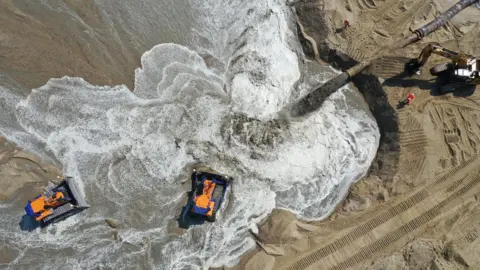
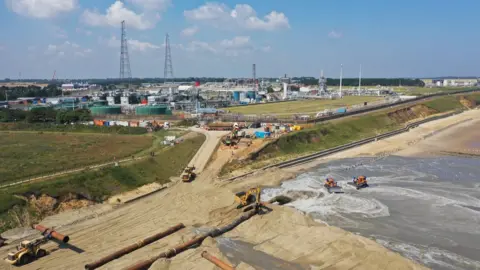
In 2019, two million cubic metres of sand were placed along a 6km stretch of coast, in an attempt to build a natural barrier to the sea.
It was the first time this approach had been tried in the UK.
Usually vast walls of rock or concrete would be used as a first line of defence - but these hard structures can change the coastal dynamics, and speed up erosion elsewhere.
The sand, engineers believed, could work with the wind, waves and tides to protect both the gas terminal and villages nearby.

Two years on, and the beach is being surveyed.
A bright yellow jet ski zooms towards the horizon, turns, then heads back to the shore.
It repeats this, back and forth, again and again.
“Onboard there’s a sonar, which measures the water depth, and a GPS that gives the position with a lot of accuracy,” explains Roeland de Zeeuw, from Shore Management - a Dutch company that’s come over to Norfolk.
“With this, we can map the seafloor.”
On the beach, a four-by-four zips along, measuring the sand that lies between the cliffs and the sea.
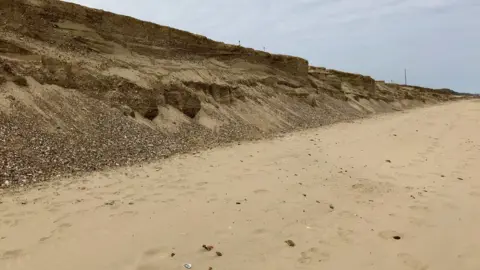
Together, this is creating a detailed picture of how the “sandscape” has changed over time.
The bulk of the sand was placed in front of the terminal. And furthest away from the sea, at the base of the cliff that the complex sits on, the beach is still about 7m-high - the level it was originally raised to.
But as you walk towards the shore, you come to a sheer 3m drop.
Jaap Flikweert, who works for the Dutch engineering company Royal HaskoningDHV, masterminded the project. He admits the split-level beach looks a bit alarming at first.
He explains that it was created by heavy storms, as the waves crashed into the sand.
“But the sand that would have been here is now further down the beach,” he explains.
“It’s moved into the shallows and now sits in a sand bar where it’s breaking the energy of the waves.”
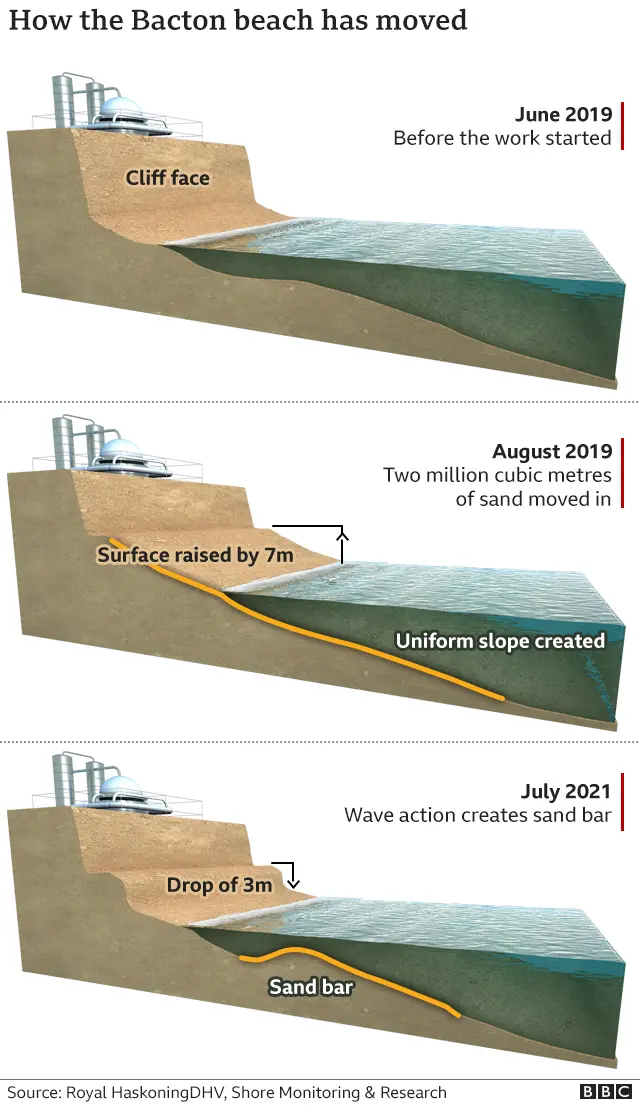
This, he says, is protecting the gas terminal.
“We've had a number of storms and some quite severe ones. So without the sand, the waves would have made it all the way up to the cliffs, where they would have caused erosion and would have threatened the terminal,” he said.
“Because of the sand, the waves never even got there.”
About a kilometre along the coast, locals in the village of Walcott have also been keeping a close eye on the scheme.
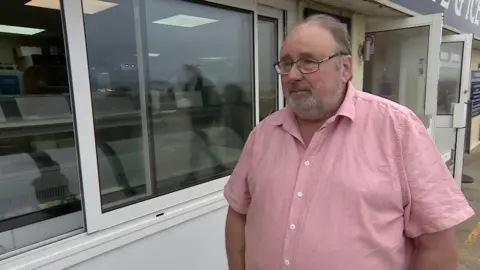
There was some scepticism at first, says Graham French, who owns a beachfront cafe.
When the first major storm hit, just a few weeks after the beach had been built, it looked like most of the sand had vanished - making local headlines.
And sand blowing onto cars and houses also caused problems for some, he said.
But Graham thinks the project is making a difference.
In the past 15 years, his cafe has flooded twice, causing major damage. Now he says he no longer feels trepidation when he checks the forecast.
“We've had storms, but nothing like the size of the waves that we used to get because the beach profile has changed now. And we definitely feel a lot safer,” Graham explains.

East Anglia’s coastline is eroding naturally - it’s a natural phenomenon that’s been happening for thousands of years.
But climate change is speeding up the process: - it’s leading to more extreme weather events as well as sea level rise.
And this is posing a major threat to coastal communities around the world.
Dr Claire Earlie, a lecturer in coastal processes from Cardiff University, says we need to embrace more natural solutions where we can.
“We’re trying to move away from sea walls, from hard structures, because they create problems elsewhere along the coast,” she explains.
“Making space for water - allowing natural processes to come back in places where we can do this - I think that's the attitude we need to have.”

But money is an issue.
The project in Norfolk has cost £20m. And while the Environment Agency has contributed £5m and North Norfolk District Council £0.5m, the biggest contribution came from the gas terminal’s operators.
It’s unlikely a scheme like this would have gone ahead if national infrastructure wasn’t at risk - and Dr Earlie says there will be difficult future decisions about which places are saved and which are not.
Even if the cost can be met, sand will not work everywhere.
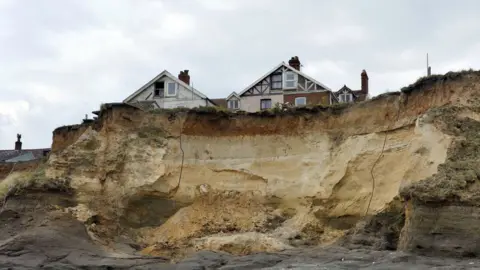 Getty Images
Getty ImagesCoastlines can differ wildly - and the geological conditions need to be just right.
But Jaap Flikweert says his team is now looking at 18 more sites around the UK that could benefit from a scheme like Norfolk’s.
It’s not a permanent solution, however - the sand is expected to last for about 15 years.
“Then at that point you have to decide whether you want to do it again,” he says.
The team will continue to monitor the sand, but Jaap says he’s happy with how it’s working so far.
“It’s really changed the place, not only for the terminal but also for the villages,” he says.
“The fact that we hear that people who used to lie awake can now sleep at night when there's a storm, that's the best thing.”
Follow Rebecca on Twitter.
